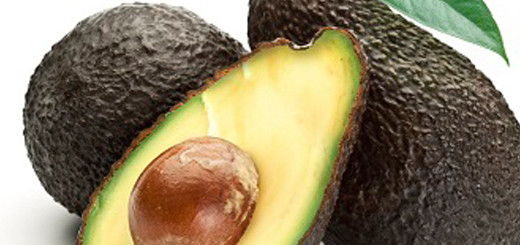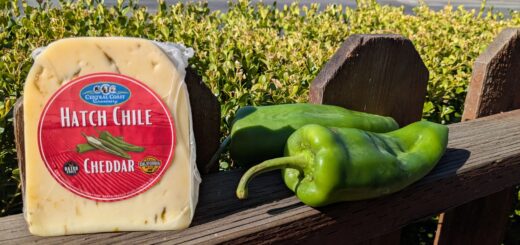Treasured Heirloom Blenheim Apricots Available Now
Treasured Heirloom Blenheim Apricots Available Now
Rich, complex-flavored Blenheims are a local gem with a fleeting and extremely short season.
By Robbie Sigona
 Heirloom Blenheim apricots. These delicate, beautiful fruits were once synonymous with the Santa Clara Valley…before it was known as the Silicon Valley.
Heirloom Blenheim apricots. These delicate, beautiful fruits were once synonymous with the Santa Clara Valley…before it was known as the Silicon Valley.
Bay-Area lifers will know exactly what I’m talking about when I say you can’t beat the flavor of a Blenheim. Give any old apricot to a longtime Bay Area resident and they’ll tell you, “they just don’t make ‘em like they used to.” Hand them a Blenheim apricot and you’ll hear them say, “now that’s an apricot!”
Blenheims, grown mostly by small, local farmers, have a more complex flavor than other apricot varieties. They have a tangy, thick flesh, yet their acid content is balanced beautifully by a high sugar content that rounds out the tartness. They have a pretty apricot color with a rosy blush outside, but their flesh is a richer, darker orange than other varieties. It is perfect for preserves as well as for drying, in addition to being a treat to eat out of hand.
It’s in our Bay Area, the Santa Clara Valley in particular, that the fragile fruit flourishes. The weather is just right, yet, due to its extremely delicate nature, the Blenheim does not ship well. It’s becoming even more of a rarity as the demand for fresh fruits to be available everywhere at anytime becomes an expectation. Farmers meet demand by replacing fragile fruits with more hardy varieties, and it’s this demand that driving out the true flavors of history.
For the Love of Blenheims
Blenheim apricot orchards, along with prunes, used to dominate orchard space in the Santa Clara Valley, but as more people moved in, more farmers moved out. Hardly any Blenheim orchards remain, save for a few small, local farmers, such as Andy Mariani of Andy’s Orchard in Morgan Hill. Andy’s farming family moved their orchard operation south with big businesses rolled into the Valley. In fact, what was once the Mariani family orchard in Cupertino is now the space directly across from Apple Computer, Inc.
Luckily, the land where Andy’s family resettled in Morgan Hill is still ideal for Blenheims and much, much more.
Andy is a bona fide stone fruit expert. Not only has he grown more than 200 varieties of fruit, and he’s a expert member of the California Rare Fruit Growers Association and the Cherry Advisory Board’s research committee. He’s also written a book on fruit varieties and has worked with the Community Alliance and Family Farmers. He’s been approached by numerous research and development groups to plant and oversee new or heirloom varieties, such as the Green Gage plum, and he’s responsible for identifying and rescuing the Baby Crawford peach, abandoned by University of California researchers. The list goes on and on.
Andy has traveled the world collecting different trees and fruits, and practices some of the newest agricultural research to develop better farming techniques. He uses organically approved pest and disease controls as well as Integrated Pest Management (IPM) to help provide safer food with less reliance on harmful pesticides and picks the fruit.
We’re glad to know Andy and to benefit from both his knowledge and expertise on stone fruits as well as his fruits, which are delivered straight from Andy’s Orchard to Sigona’s when they’re in season.
“The Blenheim is extremely rare now, it’s actually on the slow foods endangered list because so few are grown and, what’s more, is so few are grown in the right area,” said Andy. “There are a number of factors that make the Santa Clara Valley ideal for growing Blenheims, such as the right alluvial soil and the topography of the region; Blenheims are usually grown in the foothills to help avoid late spring frosts that can damage early blossoms.
Andy also says it’s the climate of the Santa Clara Valley that makes this area better for Blenheims than other apricot growing regions, such as the Central Valley. In the Santa Clara Valley, the hot days are countered by cool nights that allow the tree to bounce back from a warm day.
Hot days and warm nights make for fast-ripening fruit, which, while ok for some crops, isn’t suitable for the Blenheims to reach their tree-ripened, rich flavor potential. The variety is susceptible to disease more than others, and is also more likely to get pit burn or sun burn in the heat. Plus, the window of opportunity for harvesting is brief enough as it is.
“The season is very fleeting,” said Andy. “It doesn’t last more than a week or 10 days because they ripen quickly and all at once. You have to pick them all at once as quickly as possible or they can fall from the tree; that’s another reason most growers have switched to hardier verities like the Patterson or Tilton.
While Andy prefers the fresh Blenheim market, there’s hope for the over-ripe ‘cots if that brief harvest window is missed. The Blenheim variety is one of the best drying varieties available.
While Fresh is Fabulous, Dried is also Divine
We’ve always carried dried Blenheims at our store. They’re one of the most popular dried fruits we carry. They dry well, maintaining their rich color, flavor and shape, and truly are outstanding compared to other dried varieties.
“While most remaining Blenheim acreage is meant for drying, I recently planted a few more acres for the fresh market,” said Andy. “Of the tens of thousands of original acres of Blenheims, only about 300 remain. Marketing fresh Blenheims is a way to allow the variety to survive and continues to exist. We do dry some, but if just dried Blenheims are marketed, the margins aren’t there and farmers will continue pulling the trees out, but I’m looking to the future and hope to keep the variety available for those who seek out fresh Blenheims.”
Andy is harvesting Blenheims right now and expects the harvest window to last a few more days. While most boxes we get from Andy are spoken for before they arrive, we put out at least a box for people to purchase from when they arrive. Hurry in Thursday to get a taste of Santa Clara Valley history – if you get enough, eat them fresh or try your hand at a Blenheim jam.












